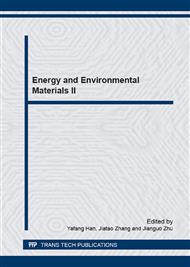p.447
p.458
p.464
p.470
p.476
p.483
p.488
p.498
p.504
Influence of Process Conditions on the Structure and Hydraulic Activity of Air-Cooling Blast Furnace Slag
Abstract:
Using the industrial limestone, fly ash and pure chemical reagents as raw materials, the blast furnace slag was prepared by the fast air-cooled method. Using orthogonal experiment method, the influence of process conditions such as heating rate, heat preservation time of the blast furnace slag in hearth, discharge temperature of slag and cooling speed on the glass content and hydraulic activity of blast furnace slag were studied, the main influence factors and the optimal process conditions of blast furnace slag were determined. The results showed that the discharge temperature of slag was the key factor influencing on the glass content of granulated blast furnace slag. The impact degree of all process conditions on the glass content of granulated blast furnace slag accord with the following sequence: discharge temperature of slag > heat preservation time > heating rate > cooling rate. And heat preservation time and cooling rate were the key factors influencing 28 days activity index of blast furnace slag, the impact sequence of all process conditions on the 28 days activity index of granulated blast furnace slag was as follows: heat preservation time > cooling rate > discharge temperature of slag > heating rate. This study also optimized the process conditions of granulated blast furnace slag for different indicators.
Info:
Periodical:
Pages:
476-482
Citation:
Online since:
March 2015
Authors:
Price:
Сopyright:
© 2015 Trans Tech Publications Ltd. All Rights Reserved
Share:
Citation:


